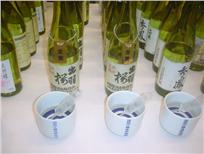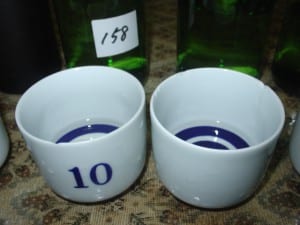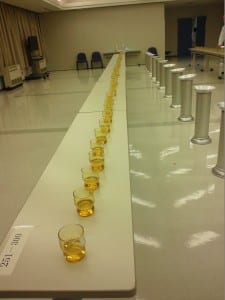The most prestigious contest in the industry
 In May, the 103rd Zenkoku Shinshu Kanpyoukai was held in Japan. The official translation of this contest is the Japan Sake Awards, but the literal translation is much more descriptive if slightly unwieldy: the National New Sake Appraisal Competition. It is the longest running competition of its kind, and I write about it each year. Those interested can search the archives for the June or July issues of this newsletter over the past decade or so.
In May, the 103rd Zenkoku Shinshu Kanpyoukai was held in Japan. The official translation of this contest is the Japan Sake Awards, but the literal translation is much more descriptive if slightly unwieldy: the National New Sake Appraisal Competition. It is the longest running competition of its kind, and I write about it each year. Those interested can search the archives for the June or July issues of this newsletter over the past decade or so.
For the click-averse, here is a summary of the main points of this vaunted competition.
• It is by far the most prestigious sake tasting in Japan
• The sake submitted is not stuff you can normally buy, but added-alcohol daiginjo made specifically for this contest. It is brewed to have a minimum of faults, but still stand out. How’s that for a challenge?!
• Between 800 and 900 of Japan’s 1200 sakagura will submit an entry to the contest. Each company is allowed to submit one sake per brewing  license, i.e. one per brewing facility owned. Some big companies own more than one facility so they would be permitted one for each.
license, i.e. one per brewing facility owned. Some big companies own more than one facility so they would be permitted one for each.
• Sake is tasted blind in round one, and about half make it to round two.
They are then tasted blind again, and about half of these will be designated as gold, the rest that made it into the second round are designated as prize-winners (the term “silver” is not used, although the gist is the same).
• So about 220 win gold each year, and while prestigious, it is not that commonly used in marketing as the average consumer has no idea this contest even exists.
• For the sixth time in ten years, and fourth in a row, Fukushima Prefecture won more golds than any other prefecture, and as has been the case for the past decade, the entire Tohoku region did very, very well.
• This year, due to the hot summer, it was expected that many of the submissions would have too much flavor, or be too sloppy in the flavors, i.e. less restrained. But this concern proved unwarranted.
• Much winning sake was on the sweet side, with extra glucose to balance out bitterness contributed by yeasts that give fruity aromas. But the finish on much of this sake was clean and balanced, so all was in order.
 • To me, the most interesting occurrence was that Aramasa from Akita won a gold medal, but did it with the oldest yeast in continuous use, Number 6, which is not known for the modern tropical fruity and anise-esque aromatics that normally win the attention of the judges. Furthermore it was a kimoto sake, i.e. brewed in a way that usually leads to more umami and gaminess, not typically what one finds in prize-winning sake at this competition. As I am seeing more and more in the sake world, “what is old is new again.”
• To me, the most interesting occurrence was that Aramasa from Akita won a gold medal, but did it with the oldest yeast in continuous use, Number 6, which is not known for the modern tropical fruity and anise-esque aromatics that normally win the attention of the judges. Furthermore it was a kimoto sake, i.e. brewed in a way that usually leads to more umami and gaminess, not typically what one finds in prize-winning sake at this competition. As I am seeing more and more in the sake world, “what is old is new again.”
• While the sake submitted is not normal market sake, the flavors, aromas, styles and leading prefectures are a harbinger of where sake is currently headed. Therein lies the contest’s appeal.
There is so much to be said about this competition: the changes over the years, the remarkably-few-yet-still-there-to-some-degree politics, the history, the records, the reasons it came to be. Much of that can be dug up in the archives of this newsletter, but more importantly it seems as though amidst today’s sake popularity, at least a few more people are showing an interest in this historically and culturally significant competition.
At these links, you can see the results and more in English (!).




